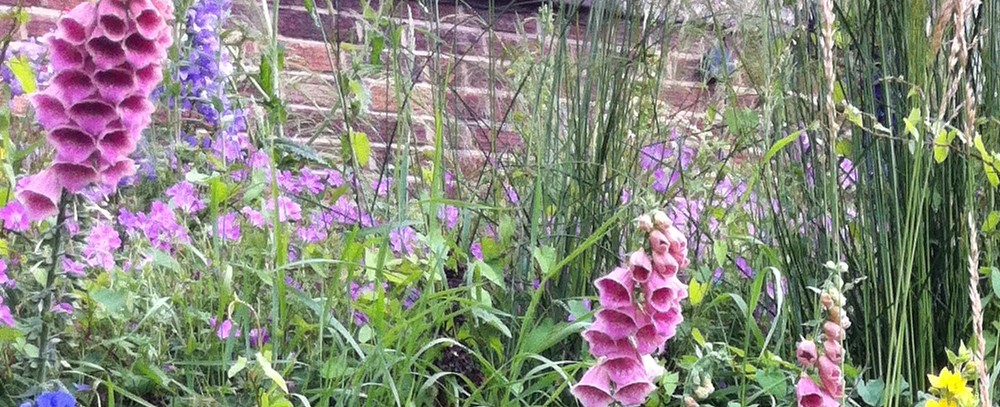I like a mulch that will eventually break down nicely into the soil, adding nutrients as it goes. Strulch is a type of straw mulch I that I have been using for a few years now. People are always curious about it as it looks so different to the oft-used mulch of bark. Fluffy in texture and bronze in colour, it seems like it might fly away when you first take it from the bag, but it knits together well and stays put! (The fact that it weighs very little is a bonus for any gardeners out there with creaky backs.) Made from wheat straw treated with iron in a patented process that ‘preserves’ the straw for up to two years, Strulch performs well as a mulch (reducing weeds and conserving soil moisture) and when it does eventually rot down it helps to improve the structure of soil. It does this by acting as a conditioner (the substance itself helping break up heavy clay) and by adding organic matter. Recommended for organic gardening, it has a neutral ph and one bag covers three square metres. Because it doesn’t retain water on its surface I have found it has helped deter slugs, as they don’t seem to like the dry texture of it. I think using this over a layer of home made compost is the way to go – the layer of clean straw will stop any weed seeds present from germinating and looks attractive.
Tag Archives: Organic horticulture
Bocking 14 Comfrey
Image
This is my useful and beautiful patch of comfrey, Symphytum x uplandicum ‘Bocking 14’ . It is a hybrid from parentage both rough (Symphytum asperum) and common (crossed with Symphytum officinale). The deep tap root of comfrey enables it to suck up nutrients from the soil which are then available to us gardeners through its prolifically produced leaves – the whole plant can be cut right down 4 -5 times in the growing season, the leaves being used for a host of different things that are listed below. I see a comfrey patch as an enhancer of garden health. I got these plants from the Organic Gardening Catalogue a few years ago now; Bocking 14 is a sterile clone, propagated through root cuttings, and doesn’t spread the way Symphytum is renowned for.
Comfrey Leaves Can Be Used:
1. As a compost activator
This adds nitrogen to the heap and helps it to heat up.
2. To mulch the soil
Layers of leaves makes a good thick mulch and provide food for worms and other soil fauna. The soil benefits from the action of the worms, which aerates it, and the addition of humus created when the leaves rot down into its surface
3. As part of a liquid feed (you have to be dedicated to horticulture to bother to do this)
You pack the leaves into a bucket and cover with water. It is advisable to cover this mixture with a lid because as it rots it will stink. After a few weeks you can dilute the resulting liquid (I would do it one part feed to ten parts water) and use it to feed your plants.
4. As a slug distractor
People who suffer from a surfeit of slugs and snails in their gardens, as I do, will try anything. As slugs are ‘cleaners’, scoffing any leaves that start to rot, the idea is to leave heaps of comfrey leaves in strategic places in the garden and allow them to wilt and go brown. This is supposed to attract the slugs away from your vegetable patch to another meal. However I am not sure if this is just providing a nice hiding place for slugs until they are ready to come and eat my lettuce. Probably you are supposed to frequently inspect the mini-heaps, and remove and dispose of the slugs at regular intervals.
5. As part of a fancy leaf mould mix
This makes a potting mix as it is too strong for seedlings. In a black plastic bag alternately layer 2 year old leafmould with chopped comfrey leaves. Layers should be about 3 or 4 inches thick. Check to see when the comfrey leaves have rotted into the mix and it should then be ready to use. This could take 6 months or less, depending on the time of year.
Although having the good intention to harvest comfrey leaves, I rarely do. The plants start flowering and looking majestic and get covered with bees – I don’t have the heart to cut them down! I think I have managed to do it around twice a season, and I’ve added it to the compost heap or used it as mulch. My challenge is to start making leaf mould this winter and look ahead to mixing my own comfrey potting compost.



